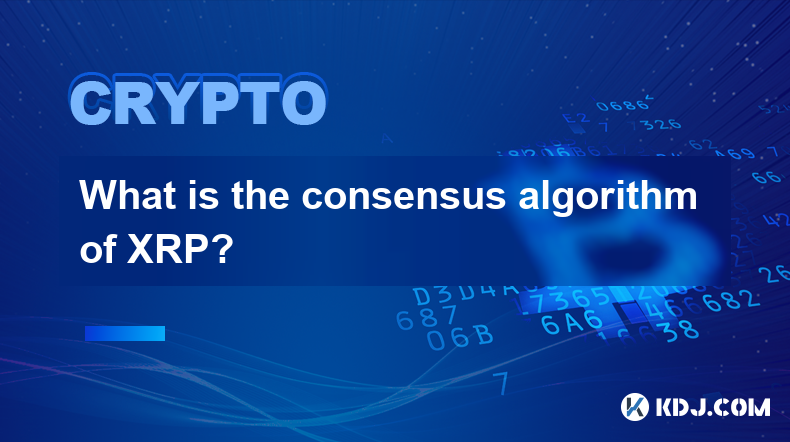-
 Bitcoin
Bitcoin $96,678.9891
1.86% -
 Ethereum
Ethereum $1,809.7319
1.84% -
 Tether USDt
Tether USDt $1.0001
0.01% -
 XRP
XRP $2.1303
-0.24% -
 BNB
BNB $601.6489
0.33% -
 Solana
Solana $147.0032
1.72% -
 USDC
USDC $1.0000
0.00% -
 Dogecoin
Dogecoin $0.1722
2.18% -
 Cardano
Cardano $0.6678
1.20% -
 TRON
TRON $0.2479
1.10% -
 Sui
Sui $3.3011
2.08% -
 Chainlink
Chainlink $13.6627
0.83% -
 Avalanche
Avalanche $19.3938
-1.81% -
 Stellar
Stellar $0.2601
1.28% -
 UNUS SED LEO
UNUS SED LEO $8.6928
-0.21% -
 Shiba Inu
Shiba Inu $0.0...01274
1.40% -
 Toncoin
Toncoin $3.0031
-0.70% -
 Hedera
Hedera $0.1754
0.86% -
 Bitcoin Cash
Bitcoin Cash $359.3938
0.50% -
 Hyperliquid
Hyperliquid $21.1573
3.09% -
 Litecoin
Litecoin $88.5499
5.95% -
 Polkadot
Polkadot $3.9260
-0.17% -
 Dai
Dai $1.0005
0.03% -
 Monero
Monero $282.3667
-1.29% -
 Bitget Token
Bitget Token $4.2249
-1.61% -
 Ethena USDe
Ethena USDe $1.0006
0.03% -
 Pi
Pi $0.5802
0.21% -
 Pepe
Pepe $0.0...08271
5.34% -
 Bittensor
Bittensor $361.5265
-0.91% -
 OKB
OKB $50.7651
0.14%
What is the consensus algorithm of XRP?
XRP uses a unique, centralized consensus mechanism relying on trusted validators (UNLs), prioritizing speed and efficiency over the decentralization of PoW or PoS, sparking ongoing debate about its long-term viability.
Mar 06, 2025 at 09:54 pm

Key Points:
- XRP uses a unique consensus mechanism, not a traditional Proof-of-Work (PoW) or Proof-of-Stake (PoS).
- It relies on a network of validators, known as unique node lists (UNLs), to approve transactions.
- This system prioritizes speed and efficiency over decentralization in the same way as PoW or PoS.
- The consensus mechanism is centralized compared to other cryptocurrencies, leading to ongoing debate.
- Understanding the implications of this centralized approach is crucial for evaluating XRP's long-term viability.
What is the consensus algorithm of XRP?
XRP, the native cryptocurrency of Ripple, doesn't employ the typical consensus algorithms like Proof-of-Work (PoW) or Proof-of-Stake (PoS) found in Bitcoin and Ethereum, respectively. Instead, it utilizes a unique consensus mechanism that heavily relies on a network of trusted validators. This system, often described as a federated consensus, operates differently from the decentralized nature of PoW and PoS. It prioritizes speed and low transaction fees over the strict decentralization principles valued by many in the cryptocurrency community.
How does the XRP consensus mechanism work?
The XRP Ledger (XRPL) operates on a network of validators, each maintaining a copy of the ledger. These validators, often referred to as unique node lists (UNLs), are pre-selected and trusted entities that verify and approve transactions. They operate on a weighted voting system. When a transaction is proposed, it's broadcast to the network. The validators independently verify the transaction's validity, and if a sufficient number agree, the transaction is added to the ledger. This process happens very quickly, resulting in significantly faster transaction times compared to many other cryptocurrencies.
What are Unique Node Lists (UNLs)?
UNLs are essentially lists of trusted validators maintained by each node on the XRPL. These lists are not publicly and transparently determined; rather, each node independently decides which validators it trusts. This characteristic is a central point of contention regarding the decentralization of XRP. While validators can be added or removed, the process is not entirely transparent or democratic, contrasting sharply with the more open validator selection processes in PoS systems. This lack of complete transparency raises concerns about potential centralization and control.
How does the XRP consensus mechanism differ from Proof-of-Work (PoW)?
The most significant difference lies in the approach to security and decentralization. PoW relies on a massive amount of computational power to secure the network and validate transactions. This process is energy-intensive and relatively slow. In contrast, XRP's consensus mechanism prioritizes speed and efficiency, achieving this by relying on a pre-selected group of validators. This trade-off between speed and decentralization is a key factor differentiating the two. The security of PoW relies on the vast network, while XRP's security relies on the trustworthiness of the UNLs.
How does the XRP consensus mechanism differ from Proof-of-Stake (PoS)?
PoS systems use a mechanism where validators are chosen based on the amount of cryptocurrency they stake. The more cryptocurrency staked, the higher the chance of being selected as a validator. This creates a more distributed validation process. However, XRP's system uses pre-selected validators, limiting the participation and potentially creating vulnerabilities to centralization. While PoS aims for decentralization through participation, XRP's system prioritizes speed and efficiency, often at the cost of decentralization. The selection process of validators is a significant distinction between the two.
Is the XRP consensus mechanism truly decentralized?
This is a point of ongoing debate within the cryptocurrency community. While the XRP ledger itself is distributed across many nodes, the selection and management of validators are not fully decentralized. The reliance on UNLs and the lack of a completely transparent validator selection process raise concerns about potential centralization. Critics argue this centralized nature undermines one of the core principles of cryptocurrency: decentralization. Proponents, however, emphasize the speed and efficiency gained through this approach.
What are the advantages of XRP's consensus mechanism?
The primary advantage is the speed and scalability of transactions. XRP transactions are processed significantly faster and at a lower cost than many other cryptocurrencies. This speed and efficiency are crucial for its intended use in facilitating cross-border payments. The faster processing times and lower fees make it a more attractive option for businesses seeking efficient financial transactions. This efficiency is a key selling point for Ripple's technology.
What are the disadvantages of XRP's consensus mechanism?
The main disadvantage is the potential for centralization. The reliance on pre-selected validators raises concerns about control and censorship. A compromise or malfunction of a significant portion of these validators could disrupt the entire network. This centralized aspect contrasts sharply with the decentralized ideals of many other cryptocurrencies. The lack of transparency in validator selection is another significant drawback.
What is the future of XRP's consensus mechanism?
The future of XRP's consensus mechanism remains uncertain. Ripple continues to develop and refine the XRPL, and future improvements may address some of the decentralization concerns. However, the core design principles, prioritizing speed and efficiency over complete decentralization, are likely to remain. The ongoing debate surrounding its centralization will continue to shape its future adoption and acceptance within the wider cryptocurrency community.
Frequently Asked Questions:
Q: Is XRP mining possible? A: No, XRP does not utilize mining like Bitcoin. There is no energy-intensive process to create new XRP.
Q: How secure is the XRP Ledger? A: The security of the XRP Ledger relies on the integrity and trustworthiness of the UNLs. While it's designed to be secure, the centralized nature raises security concerns compared to fully decentralized systems.
Q: Can anyone become a validator on the XRP Ledger? A: Not directly. Validators are not chosen through a transparent, open process like in some PoS systems. The selection process is less transparent and more controlled.
Q: How does XRP handle transaction fees? A: XRP has very low transaction fees compared to other cryptocurrencies, contributing to its efficiency for large-scale payments.
Q: Is XRP truly decentralized? A: This is a matter of ongoing debate. While the ledger is distributed, the control over the validators introduces a degree of centralization, contrasting with the decentralized ideals of many other cryptocurrencies.
Disclaimer:info@kdj.com
The information provided is not trading advice. kdj.com does not assume any responsibility for any investments made based on the information provided in this article. Cryptocurrencies are highly volatile and it is highly recommended that you invest with caution after thorough research!
If you believe that the content used on this website infringes your copyright, please contact us immediately (info@kdj.com) and we will delete it promptly.
- Bitcoin (BTC) price flips to a new all-time high realized capitalization of $890B, suggesting strong conviction
- 2025-05-08 02:45:13
- Meme Coins Reshaped Digital Finance
- 2025-05-08 02:45:13
- Bitcoin tapped $97K, injecting 1 trillion Chinese Yuan ($138.6 billion) into the market.
- 2025-05-08 02:40:13
- Democrats Turn Up the Pressure on President Donald Trump's Cryptocurrency Ventures
- 2025-05-08 02:40:13
- Fartcoin (FART) Just Posted a Sharp 10% Correction, Bringing Price Action Directly Into a Critical Support Level
- 2025-05-08 02:35:13
- AI agent launchpad Virtuals Protocol soared over 200% to a $900 million market cap this month, and smaller AI coins are following suit.
- 2025-05-08 02:35:13
Related knowledge

How to calculate Ethereum network fee? How to reduce transaction costs?
May 08,2025 at 02:15am
Understanding and managing Ethereum network fees is crucial for anyone involved in transactions on the Ethereum blockchain. The network fee, also known as gas fee, is the amount of Ether (ETH) required to successfully conduct a transaction or execute a smart contract on the Ethereum network. Calculating these fees and finding ways to reduce them can sig...

How to perform MOVE cross-chain transfer? What to do if the gas fee is too high?
May 07,2025 at 08:03pm
Introduction to MOVE Cross-Chain TransferCross-chain transfers have become an essential part of the cryptocurrency ecosystem, allowing users to move assets between different blockchain networks. One of the popular protocols for achieving this is the MOVE cross-chain transfer. This article will guide you through the process of performing a MOVE cross-cha...

Does DYDX support cross-chain? Is the transfer speed fast?
May 07,2025 at 05:56pm
Introduction to DYDXDYDX is a leading decentralized exchange (DEX) that primarily operates on the Ethereum blockchain. It is known for its advanced trading features, including perpetual contracts and margin trading. A common question among users is whether DYDX supports cross-chain functionality and how fast the transfer speeds are. In this article, we ...

How to close a DYDX contract? How to set an automatic stop loss?
May 08,2025 at 12:29am
Closing a DYDX contract and setting an automatic stop loss are crucial skills for managing your positions on the dYdX decentralized exchange. Whether you're looking to mitigate risk or simply exit a trade, understanding these processes can enhance your trading strategy. In this article, we will explore the detailed steps for closing a DYDX contract and ...

How to open DYDX leverage? What is the maximum multiple?
May 07,2025 at 05:21pm
Opening leverage on DYDX can be an exciting way to potentially increase your returns in the cryptocurrency market. However, it's important to understand the process thoroughly and be aware of the risks involved. In this article, we'll walk you through the steps to open leverage on DYDX and discuss the maximum leverage multiple available. Understanding D...

How to top up and trade DYDX? What is the withdrawal fee?
May 07,2025 at 06:02pm
Introduction to DYDXDYDX is a decentralized exchange (DEX) that operates on the Ethereum blockchain, allowing users to trade cryptocurrencies without the need for intermediaries. It is known for its perpetual contracts, which are a type of derivative that allows traders to speculate on the price movements of various assets. To engage with DYDX, users ne...

How to calculate Ethereum network fee? How to reduce transaction costs?
May 08,2025 at 02:15am
Understanding and managing Ethereum network fees is crucial for anyone involved in transactions on the Ethereum blockchain. The network fee, also known as gas fee, is the amount of Ether (ETH) required to successfully conduct a transaction or execute a smart contract on the Ethereum network. Calculating these fees and finding ways to reduce them can sig...

How to perform MOVE cross-chain transfer? What to do if the gas fee is too high?
May 07,2025 at 08:03pm
Introduction to MOVE Cross-Chain TransferCross-chain transfers have become an essential part of the cryptocurrency ecosystem, allowing users to move assets between different blockchain networks. One of the popular protocols for achieving this is the MOVE cross-chain transfer. This article will guide you through the process of performing a MOVE cross-cha...

Does DYDX support cross-chain? Is the transfer speed fast?
May 07,2025 at 05:56pm
Introduction to DYDXDYDX is a leading decentralized exchange (DEX) that primarily operates on the Ethereum blockchain. It is known for its advanced trading features, including perpetual contracts and margin trading. A common question among users is whether DYDX supports cross-chain functionality and how fast the transfer speeds are. In this article, we ...

How to close a DYDX contract? How to set an automatic stop loss?
May 08,2025 at 12:29am
Closing a DYDX contract and setting an automatic stop loss are crucial skills for managing your positions on the dYdX decentralized exchange. Whether you're looking to mitigate risk or simply exit a trade, understanding these processes can enhance your trading strategy. In this article, we will explore the detailed steps for closing a DYDX contract and ...

How to open DYDX leverage? What is the maximum multiple?
May 07,2025 at 05:21pm
Opening leverage on DYDX can be an exciting way to potentially increase your returns in the cryptocurrency market. However, it's important to understand the process thoroughly and be aware of the risks involved. In this article, we'll walk you through the steps to open leverage on DYDX and discuss the maximum leverage multiple available. Understanding D...

How to top up and trade DYDX? What is the withdrawal fee?
May 07,2025 at 06:02pm
Introduction to DYDXDYDX is a decentralized exchange (DEX) that operates on the Ethereum blockchain, allowing users to trade cryptocurrencies without the need for intermediaries. It is known for its perpetual contracts, which are a type of derivative that allows traders to speculate on the price movements of various assets. To engage with DYDX, users ne...
See all articles





















































































